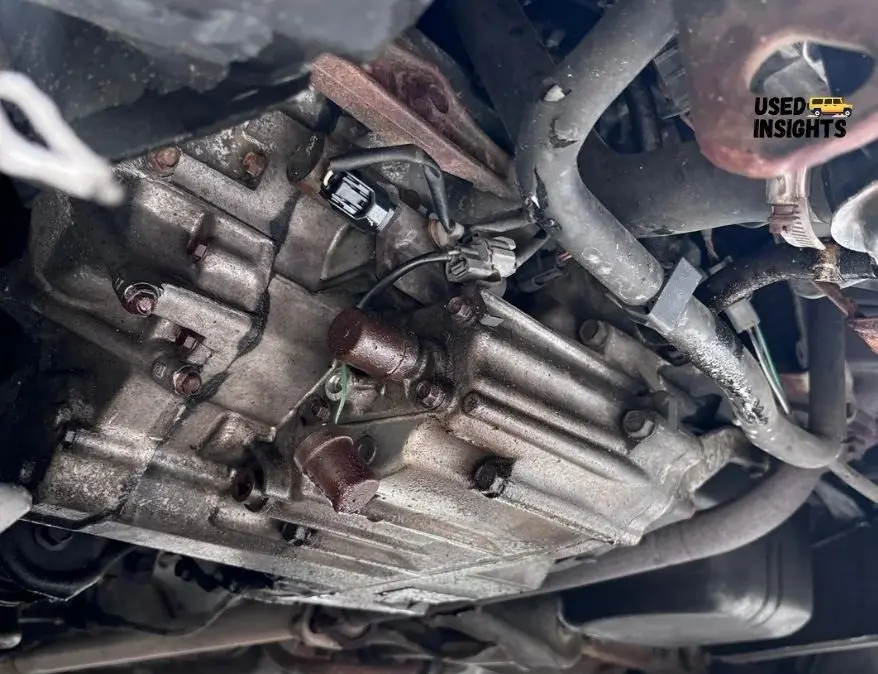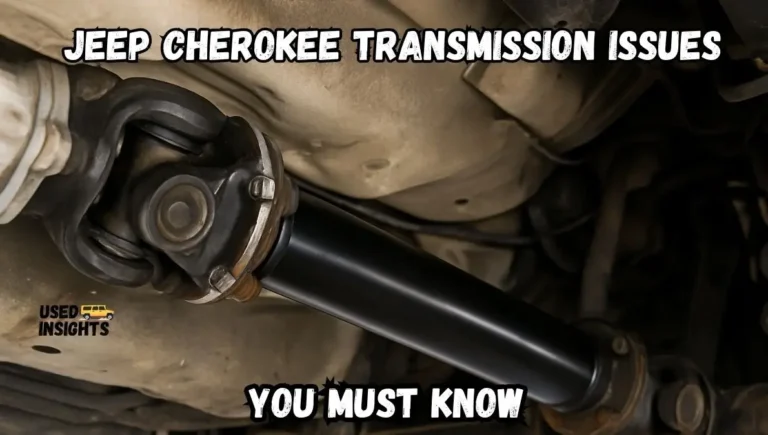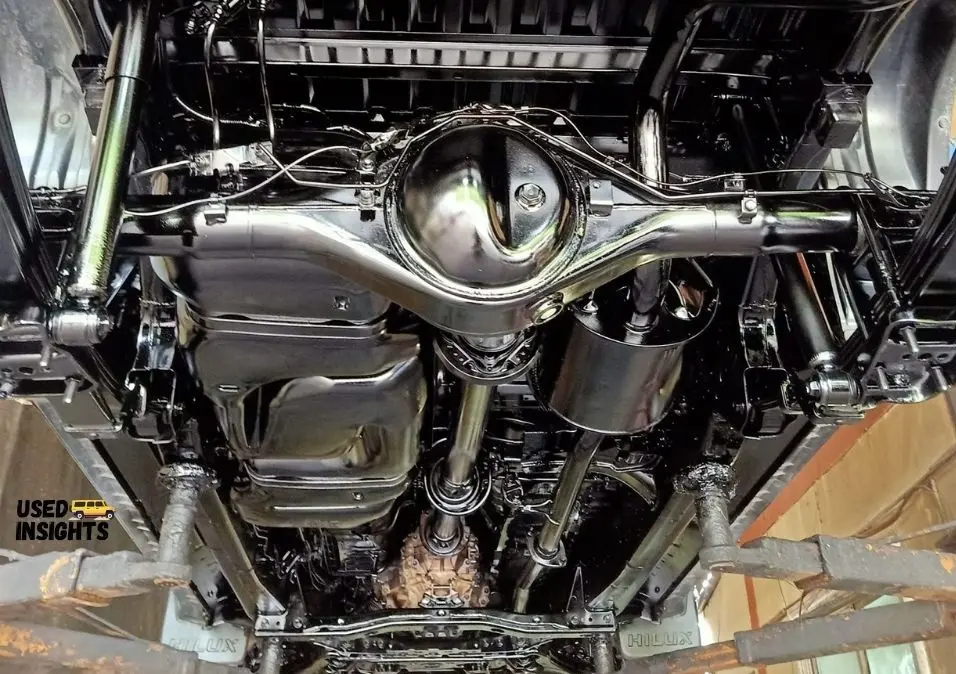The Jeep Cherokee stands as one of America’s most enduring SUV nameplates, first rolling off production lines in 1974 as an iconic addition to Jeep’s SUV portfolio. In this 49 years journey, few people have noticed Jeep Cherokee Transmission Problems. Originally marketed as a more athletic alternative to the Jeep Wagoneer, this legendary vehicle debuted as a two-door full-sized sport utility vehicle that would evolve dramatically over nearly five decades of production.
Throughout its remarkable journey, Jeep expanded the Cherokee lineup to encompass various body configurations, including compact SUVs, compact crossover SUVs, and mid-size crossover SUVs.
The Cherokee earned its reputation through exceptional off-road performance capabilities combined with accessible pricing that made adventure attainable for countless drivers. After an impressive 49-year production run, Jeep concluded Cherokee manufacturing in February 2023, marking the end of an automotive era.
Understanding Jeep Cherokee Transmission Evolution Across Five Generations
Comprehensive Transmission Options Throughout Cherokee’s Lifespan
Between 1974 and 2023, the Jeep Cherokee underwent continuous refinement and advancement across five distinctive generations. Each generation brought innovative transmission technologies, with Jeep consistently offering multiple drivetrain options to meet diverse driving needs.
The evolution began with a fundamental four-speed manual transmission in the inaugural generation, eventually progressing to sophisticated five and six-speed manual systems alongside advanced three, four, five, and nine-speed automatic transmissions. Here’s a detailed breakdown of transmission options across all Cherokee generations:
First Generation Cherokee SJ (1974-1983): The Foundation Years
Available Transmission Options:
- Four-speed manual transmission system
- Three-speed automatic transmission system
Second Generation Cherokee XJ (1984-2001): Expanding Capabilities
Manual Transmission Choices:
- Four-speed Aisin AX-5 manual transmission
- Five-speed Aisin AX-5 manual transmission
- Five-speed Aisin AX-15 manual transmission
- Five-speed NVG NV3550 manual transmission
- Five-speed Peugeot BA-10/5 manual transmission
Automatic Transmission Options:
- Three-speed 30RH automatic transmission
- Three-speed Chrysler A904 automatic transmission
- Four-speed Aisin AW-4 automatic transmission
Third Generation Cherokee KJ (2002-2007): Advanced Engineering
Automatic Transmission Systems:
- Four-speed Chrysler 45RFE automatic transmission
- Four-speed Ultradrive 42RLE automatic transmission
- Five-speed Chrysler 545RFE automatic transmission
Manual Transmission Systems:
- Five-speed New Venture Gear NV3550 manual transmission
- Five-speed New Venture Gear NV1500 manual transmission
- Six-speed Chrysler NSG370 manual transmission
Fourth Generation Cherokee KK (2008-2013): Refined Performance
Available Transmission Technologies:
- Four-speed Ultradrive 42RLE automatic transmission
- Five-speed Mercedes-Benz W5A580 automatic transmission
- Six-speed Chrysler NSG370 manual transmission
Fifth Generation Cherokee KL (2014-2023): Modern Innovation
Final Generation Transmission Options:
- Six-speed manual transmission system
- Nine-speed 948TE automatic transmission system
The four-speed manual and three-speed automatic configurations were phased out following the 2001 model year. Subsequently, six-speed manual transmissions became standard equipment in Cherokee models manufactured after 2001. The fifth generation introduced Jeep’s revolutionary nine-speed automatic transmission, offering enhanced gear selection flexibility. However, this advanced nine-speed system also presented unique mechanical challenges that owners should understand.
Four Critical Jeep Cherokee Transmission Problems: Detailed Analysis and Repair Solutions
Cherokee owners frequently encounter specific transmission-related complications that appear consistently across multiple model years. Power Transfer Unit malfunctions, transmission fluid leakage, valve body deterioration, and Transmission Control Module failures represent the most prevalent drivetrain issues affecting Cherokee vehicles.
1. Power Transfer Unit (PTU) Complications: A Major Drivetrain Concern
Understanding PTU Function and Failure Patterns
The Power Transfer Unit serves as a crucial drivetrain component in vehicles equipped with All-Wheel Drive (AWD) and Four-Wheel Drive (4WD) systems. This sophisticated assembly combines gear mechanisms and clutch systems to establish connections between the transmission and drivetrain, effectively directing power distribution to rear wheels. This particular issue predominantly affects fifth-generation Cherokee models equipped with nine-speed automatic transmission systems.
PTU-related problems typically manifest after vehicles accumulate approximately 80,000 miles of operation. When PTU components fail, the transmission becomes disconnected from the drivetrain system, severely compromising vehicle performance. Due to widespread PTU issues, Jeep initiated multiple vehicle recalls to address these recurring problems.
Recognizing PTU Failure Warning Signs
Observable Symptoms Include:
- Audible grinding or clunking sounds during gear transitions
- Vehicle vibration and jerking motions while executing turns
- Complete four-wheel drive system disengagement
- Dashboard display of ‘Service 4WD’ warning messages
- Visible fluid leakage beneath the vehicle
- Transmission overheating conditions
Root Causes of PTU Failure
PTU assemblies contain specialized lubricating fluid that maintains smooth operation of internal gears and clutches. This essential fluid experiences significant depletion after vehicles reach 80,000-mile intervals. Insufficient fluid levels represent the primary cause of PTU system failure. Additionally, complete PTU transfer case deterioration occurs over time due to aggressive gear shifting practices or extended periods without proper fluid maintenance.
PTU Repair Solutions and Associated Costs
Following professional diagnostic evaluation, PTU fluid replacement involves draining contaminated fluid and refilling with fresh lubricant. Complete transfer case replacement may be covered under manufacturer warranty at no cost to owners. Post-warranty replacements typically range from $700 to $1,000, excluding professional labor charges.
2. Valve Body System Failure: Automatic Transmission Complications
The Critical Role of Valve Body Components
The valve body represents an essential automatic transmission component responsible for directing transmission fluid through designated pathways, ensuring optimal transmission functionality. This intricate system manages clutch actuation through precise fluid flow control and pressure regulation. Valve body failures commonly affect Cherokee models equipped with automatic transmission systems.
Identifying Valve Body Problems
Characteristic Warning Signs:
- Transmission producing clunking or grinding noises
- Gear engagement issues, particularly sticking in third or seventh gear positions
- Harsh or delayed gear transitions
- Illumination of ‘Check Engine’ dashboard warning light
Understanding Valve Body Deterioration
Valve body components typically experience wear-related failure after accumulating 50,000 miles of service. However, premature failure may occur due to neglected transmission fluid maintenance or aggressive shifting patterns that exceed design specifications.
Learn How to Fix Service Shifter Jeep Cherokee?
Valve Body Replacement and Maintenance
Valve body replacement represents a targeted repair solution that doesn’t require complete transmission overhaul. Professional valve body replacement, including labor costs, typically reaches $1,500. Following valve body installation, transmission fluid replacement becomes essential. Preventive transmission fluid changes every 50,000 miles significantly reduce future complications.
3. Transmission Fluid Leakage: A Serious Safety and Performance Concern
The Importance of Proper Fluid Levels
Transmission fluid provides essential lubrication for all transmission components while ensuring smooth operational performance. Fluid leakage dramatically reduces transmission efficiency and performance capabilities. More critically, transmission fluid leakage presents serious fire hazards that require immediate attention.
Recognizing Transmission Fluid Leakage
Warning Indicators Include:
- Distinctive burnt or sweet odor from leaked transmission fluid
- Measurably low transmission fluid levels during routine checks
- Harsh, grinding gear shift operations
- Audible clunking sounds during gear engagement
- Transmission overheating episodes
- Activation of transmission warning dashboard lights
Common Causes of Fluid Leakage
Transmission fluid leakage represents a universal automotive concern affecting vehicles as components age and deteriorate. Leakage typically occurs when hoses, fluid reservoirs, valve covers, or other fluid-carrying transmission components reach end-of-service life. Most fluid leakage issues develop after vehicles accumulate 200,000 miles of operation.
However, Chrysler documented numerous reports of premature transmission fluid leakage in Cherokee models due to defective oil cooler hoses, resulting in subsequent vehicle recalls to address these manufacturing defects.
Fluid Leakage Repair Costs and Solutions
Transmission fluid leakage repair costs vary depending on which specific components require replacement. Aftermarket oil cooler hoses begin at approximately $49, with pricing increasing based on brand reputation and component quality. Generally, transmission fluid leakage repairs remain under $1,000 for most situations. Cherokee vehicles still covered under manufacturer warranty receive fluid leakage repairs at no cost to owners.

4. Transmission Control Module (TCM) Malfunction: Electronic System Failures
Understanding TCM Functionality
The Transmission Control Module represents a sophisticated computerized system that manages transmission operations, including gear shift timing and transmission health monitoring. TCM failures predominantly affect 2014-2021 Jeep Cherokee model years, representing a significant concern for owners of these vehicles.
TCM Failure Symptom Recognition
Observable Malfunction Indicators:
- Driveshaft vibration and shaking at reduced speeds
- Jerky or erratic gear engagement during normal driving
- Gear slipping from first directly to third gear, bypassing second gear entirely
- Delayed gear shifting responses, particularly during parking maneuvers
- Extremely difficult or resistant gear shift operations
Root Causes of TCM Problems
TCM failures typically result from software programming glitches or fundamental design flaws within the control module. Nine-speed automatic transmissions demonstrate a documented history of gear shifting irregularities directly attributed to malfunctioning TCM units. You can also reset Reset Oil Life on Jeep Cherokee.
TCM Repair Solutions and Investment Requirements
Initial TCM troubleshooting often involves software updates that resolve control module failures. Since most TCM complications stem from software-related issues, repairs may cost as little as $100 for programming updates. When software solutions prove ineffective, complete TCM module replacement becomes necessary, with maximum costs reaching $860 for parts and professional installation.
Conclusion: Maintaining Your Cherokee’s Transmission Health
Understanding these common Cherokee transmission issues empowers owners to recognize early warning signs and seek appropriate repairs before minor problems escalate into major drivetrain failures. Regular maintenance, including timely fluid changes and professional inspections, significantly extends transmission lifespan while preserving your Cherokee’s legendary capability and reliability.



1 comment